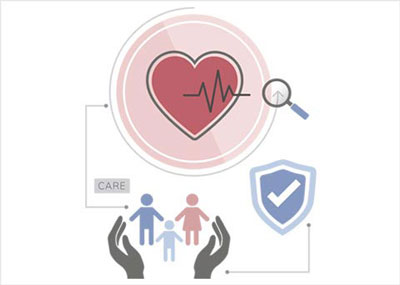
Life insurance is the insurance against someone’s life. This is a policy written on the life of person called insured. It is a contract between the insurance company and the insured, in which insured pays the agreed premium during a particular period and in return the insurance company guarantees a pre-agreed specific amount to the named beneficiaries of the policy upon the death of the insured.
Generally people take life insurance to provide a lump-sum amount also called as death benefit to the people who are financially dependent on them.
Who should have life insurance policy?
- People with spouse/children/siblings/aging parents who are dependent on them.
- Business Owners to ensure business succession.
As it is known that the money received from the insurer is tax free, one should always plan for the enough cover i.e. 8 to 10 times of the current annual salary.
There are many different types of life insurance available in the market focusing on the different needs of people.
Different Types of Life Insurance Policies:
- Term Policy – Term policy is a policy in which the insurer promises policy owner to pay a specific amount to the beneficiaries in case the insured die during the policy period. In return, the policy holder pays monthly premium to the insurer for the agreed duration of time. This is the most basic and cheapest form of insurance and do not contain any profit component.
- Whole Life Insurance – Whole Life Insurance Policy is the policy which remains in existence for the entire life of insured person. It protects the insured against death, whenever it may happen. Premiums are payable throughout the whole life of the insured till death and the sum assured is paid after the death of the insured or at the age of 100 years. It means there is no fixed time period under this insurance.
- Unit linked insurance plan (ULIP) – It is a market-linked plan, which is taken as best investment plan with insurance. It provides the investor, best platform to invest in different types on investments such as stocks, bonds as well as mutual funds. There are various plans comes under ULIP with different purposes like for retirement, wealth collection, children education and health benefits. This is called 2-in-1 plan as it offers investment and protection both to investors.
- Endowment Policy – Endowment Policy covers the insured for a specific period as per chosen by him. The nominee receives the sum assured and bonus (if any for the number of years the policy was in force) on the event of the death of insured. And in case of maturity the insured gets the sum assured and maturity bonus.
2 types of endowment plans are there:
- Endowment with
profit – In this only the sum assured is promised to pay.
- Endowment
without profit – In this the sum assured with the bonus for the
number of years in the policy was in force.
- Money Back Insurance Policy – Money
Back Policy is a type of saving plan where insured/nominee gets
survival benefits along with maturity benefit and bonus. In this
policy certain fixed amount is agreed to pay by insurer in key
stages in life. This protects against financial crisis by giving
money-back in regular intervals before the maturity. Money back
pay outs are called Survival Benefits, which are paid during the
plan tenure. Survival benefits are calculated as a percentage of
the sum assured.
- Child’s Plan – Child plan serves the
dual purposes of securing child future and providing finance at
the major milestones in child life like higher educations,
marriage etc. Amount of premium depends on the amount of sum
assured and amount of maturity benefits. Regular premium and
Single premium, both the options are available. Period should be
chosen as per the future requirement of the child. Types of Child
Plans:
- Child ULIPs : Certain amount of the
premium invested in debts instruments and balance in equities .
Policy holder keeps the right to manage this investment ratio.
- Child Endowment Plan : The premium is
invested in debt instruments by the insurance company.
- Retirement Plan – Retirement Plan is
the investment which insures the retirement period by providing
the income in that period. Plan must be chosen after determining
the retirement income goals.
Eligibility Criteria
- Age – 18-65 years.
- Insurance companies may undertake a test to ensure that the person is healthy and does not already carry a medical condition that could affect his life span.
Documents required to purchase term insurance are as follows:
- Proof of age: Driving license/School or college certificate/PAN card/passport/birth certificate.
- Identity proof: Voters ID/PAN card/Driving license/Aadhaar card/Passport/Letter from a recognized public authority or public servant with photograph verifying the identity.
- Address proof: Telephone bill/Ration card/Electricity bill.
- Income proof: Income tax return/Employer’s certificate.
Documents required at the time of making the claim
- A statement expressing the desire to claim the life insurance proceeds.
- Original policy document.
- Death certificate.
- In case of accidental death, post mortem report and police FIR.
- In case of natural death or death due to illness, hospital records, details of treatment etc.
- Some additional documents may be demanded based on the sum assured and the nature of the policy.

 Subscribe to our newsletter for special promotions
& updates.
Subscribe to our newsletter for special promotions
& updates.

